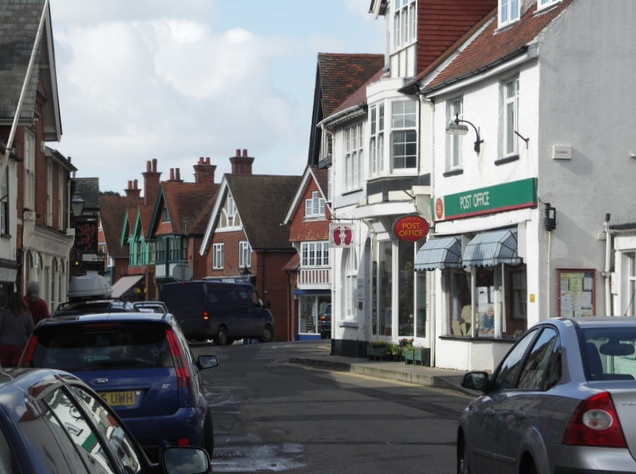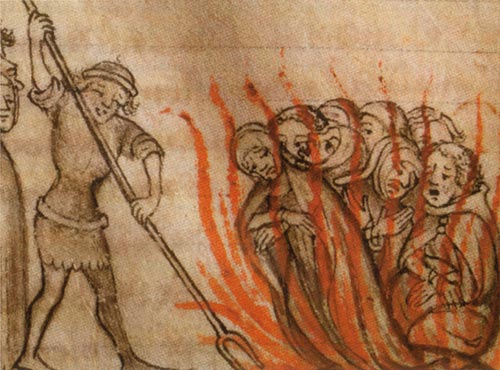|
Milford-on-Sea
Milford on Sea, often hyphenated, is a large coastal village and civil parish in the New Forest district, on the Hampshire coast, England. The parish had a population of 4,660 at the 2011 census and is centred about south of Lymington. Tourism and businesses for quite prosperous retirees as well as the care sector make up large parts of its economy. Businesses include restaurants, cafés, tea rooms, small shops, garden centres, pubs and camping/lodge/caravan parks, bed-and-breakfasts and a few luxury hotels. Shops cluster on its small high street, which fronts a village green. The western cliffs are accessed by flights of steps. In common with the flatter coast by the more commercial and eastern part of Milford, they have car parks with some facilities, which, along with many apartment blocks and houses, have close views of The Needles, which are the main, large chalk rocks immediately next to the Isle of Wight. Its western coast is a large bank of shingle below green cliff ... [...More Info...] [...Related Items...] OR: [Wikipedia] [Google] [Baidu] |
New Forest (district)
New Forest is a local government district in Hampshire, England. Its council is based in Lyndhurst, although the largest town is Totton. The district also includes the towns of Fordingbridge, Lymington, New Milton and Ringwood. The district is named after and covers most of the New Forest National Park, which occupies much of the central part of the district. The main urban areas are around the periphery of the forest. The district has a coastline onto the Solent to the south and Southampton Water to the east. The neighbouring districts are Bournemouth, Christchurch and Poole, Dorset, Wiltshire, Test Valley, Southampton and Eastleigh (across Southampton Water). The district also faces the Isle of Wight across the Solent. History The district was created on 1 April 1974 under the Local Government Act 1972, covering the whole area of two former districts and most of a third, which were all abolished at the same time: *Lymington Municipal Borough * New Forest Rural District ... [...More Info...] [...Related Items...] OR: [Wikipedia] [Google] [Baidu] |
Lymington
Lymington is a port town on the west bank of the Lymington River on the Solent, in the New Forest (district), New Forest district of Hampshire, England. The town faces Yarmouth, Isle of Wight, to which there is a Roll-on/roll-off, car ferry service operated by Wightlink. It is within the civil parish of Lymington and Pennington. The town has a large tourist industry, based on proximity to the New Forest and its harbour. It is a major yachting centre with three marinas. As of 2015, the parish of Lymington and Pennington had a population of 15,726. History The earliest settlement in the Lymington area was around the Iron Age hill fort known today as Buckland Rings. The hill and ditches of the fort survive, and archaeological excavation of part of the walls was carried out in 1935. The fort has been dated to around the 6th century BC. There is another supposed Iron Age site at nearby Buckland Rings#Ampress Camp, Ampress Hole. However, evidence of later settlement there (as opp ... [...More Info...] [...Related Items...] OR: [Wikipedia] [Google] [Baidu] |
Domesday Book
Domesday Book ( ; the Middle English spelling of "Doomsday Book") is a manuscript record of the Great Survey of much of England and parts of Wales completed in 1086 at the behest of William the Conqueror. The manuscript was originally known by the Latin name , meaning "Book of Winchester, Hampshire, Winchester", where it was originally kept in the royal treasury. The ''Anglo-Saxon Chronicle'' states that in 1085 the king sent his agents to survey every shire in England, to list his holdings and dues owed to him. Written in Medieval Latin, it was Scribal abbreviation, highly abbreviated and included some vernacular native terms without Latin equivalents. The survey's main purpose was to record the annual value of every piece of landed property to its lord, and the resources in land, labour force, and livestock from which the value derived. The name "Domesday Book" came into use in the 12th century. Richard FitzNeal wrote in the ( 1179) that the book was so called because its de ... [...More Info...] [...Related Items...] OR: [Wikipedia] [Google] [Baidu] |
John, King Of England
John (24 December 1166 – 19 October 1216) was King of England from 1199 until his death in 1216. He lost the Duchy of Normandy and most of his other French lands to King Philip II of France, resulting in the collapse of the Angevin Empire and contributing to the subsequent growth in power of the French Capetian dynasty during the 13th century. The First Barons' War, baronial revolt at the end of John's reign led to the sealing of Magna Carta, a document considered a foundational milestone in English and later British constitution of the United Kingdom, constitutional history. John was the youngest son of King Henry II of England and Duchess Eleanor of Aquitaine. He was nicknamed John Lackland () because, as a younger son, he was not expected to inherit significant lands. He became Henry's favourite child following the failed revolt of 1173–1174 by his brothers Henry the Young King, Richard I of England, Richard, and Geoffrey II, Duke of Brittany, Geoffrey against their ... [...More Info...] [...Related Items...] OR: [Wikipedia] [Google] [Baidu] |
Knights Templar In England
The history of the Knights Templar in England began when the French nobleman Hugues de Payens, founder and Grand Master of the Order, visited the country in 1128 to raise men and money for the Crusades. History King Henry II (1154–1189) granted the Templars land across England, including some territory near Castle Baynard on the River Fleet, where they built a round church, patterned after the Knights Templar headquarters on Temple Mount in Jerusalem. The Templar estate at Cressing Temple in Essex was one of the very earliest and largest Templar estates in England. The Order was also given the advowson of St Clement Danes. In 1184, the Templars' headquarters was transferred to the New Temple (Temple Church) in London where once again they built a round church, this one patterned after the Church of the Holy Sepulchre in Jerusalem. It was consecrated in 1185, and became the location for initiation rituals. In 1185, a hospital was founded at Newark-on-Trent and granted ... [...More Info...] [...Related Items...] OR: [Wikipedia] [Google] [Baidu] |
Appurtenance
An appurtenance is something subordinate to or belonging to another larger, principal entity, that is, an adjunct, satellite, or accessory that generally accompanies something else."Appurtenance" . Dictionary.com. . Retrieved February 23, 2018. The word derives . Usage In a context, an appurtenance refers to a right, privilege, or improvement belonging to or that accompanies a principal property. For example, the |
Christchurch Priory
Christchurch Priory is an ecclesiastical parish and former priory church in Christchurch in the English county of Dorset (formerly in Hampshire). It is one of the longest parish churches in the country and is as large as many of the Church of England Cathedrals. Early history The story of Christchurch Priory goes back to at least the middle of the 11th century, as the Domesday Book of 1086 says there was a priory of 24 secular canons here in the reign of Edward the Confessor. The Priory is on the site of an earlier church dating from 800AD. In 1094 a chief minister of William II, Ranulf Flambard, then Dean of Twynham, began the building of a church. Local legend has it that Flambard originally intended the church to be built on top of nearby St. Catherine's Hill but during the night all the building materials were mysteriously transported to the site of the present priory. Although in 1099 Flambard was appointed Bishop of Durham, work continued under his successors. A mi ... [...More Info...] [...Related Items...] OR: [Wikipedia] [Google] [Baidu] |
William Cornwallis
Admiral Sir William Cornwallis, (20 February 17445 July 1819) was a Royal Navy officer. He was the brother of Charles Cornwallis, 1st Marquess Cornwallis, British commander at the siege of Yorktown. Cornwallis took part in a number of decisive battles including the siege of Louisbourg in 1758, when he was 14, and the Battle of the Saintes but is best known as a friend of Lord Nelson and as the commander-in-chief of the Channel Fleet during the Napoleonic Wars. He is depicted in the Horatio Hornblower novel, ''Hornblower and the Hotspur''. His affectionate contemporary nickname from "the ranks" was Billy Blue, and a sea shanty was written during his period of service, reflecting the admiration his men had for him. Early life William Cornwallis was born 20 February 1744. His father was Charles, the fifth baron and first earl Cornwallis, and his mother was Elizabeth, daughter of Charles Townshend, 2nd Viscount Townshend. William was the younger brother of General Charles Cornw ... [...More Info...] [...Related Items...] OR: [Wikipedia] [Google] [Baidu] |
Baron Gorges Of Dundalk
Baron Gorges of Dundalk was a title in the Peerage of Ireland. It was created on 13 July 1620 for Sir Edward Gorges, 1st Baronet. He had already been created a baronet, of Langford in the County of Wiltshire, in the Baronetage of England on 25 November 1611. Lord Gorges of Dundalk was the eldest surviving son of Sir Thomas Gorges, of Longford Castle Longford Castle is a Grade I listed country house on the banks of the River Avon south of Salisbury, Wiltshire, England. It is the seat of the Earl of Radnor and an example of the Elizabethan prodigy house. History In 1573 Thomas Gorges ..., Wiltshire, and Helena, Marchioness of Northampton. The barony and baronetcy became extinct on the death of the second Baron in September 1712. Barons Gorges of Dundalk (1620) *Edward Gorges, 1st Baron Gorges of Dundalk ( – ) *Richard Gorges, 2nd Baron Gorges of Dundalk (1622 – September 1712) References See also * Gorges-Meredyth baronets {{DEFAULTSORT:Gorges of D ... [...More Info...] [...Related Items...] OR: [Wikipedia] [Google] [Baidu] |
Thomas Gorges
Sir Thomas Gorges (1536 – 30 March 1610) of Longford Castle in Wiltshire, was a courtier and Groom of the Chamber to Queen Elizabeth I. Via his great-grandmother Lady Anne Howard, a daughter of John Howard, 1st Duke of Norfolk, he was a second cousin of both Queens Anne Boleyn and Catherine Howard, the second and fifth wives of King Henry VIII. In 1586 he was elected as a Member of Parliament for Downton in Wiltshire. Origins He was born in Wraxall, Somerset, the son of Sir Edward Gorges of Wraxall, by either his first or second wife, namely Mary Newton or Mary Poyntz (sister of Nicholas Poyntz (d.1557)), respectively. His nephew was the poet and translator Arthur Gorges. He was descended in the male line from Sir John Russell (died c. 1224) of Kingston Russell in Dorset, a household knight of King John (1199–1216). Ralph Gorges, 2nd Baron Gorges (d.1330/1), who died without issue, was keen to see his family name and armorials continue, and formed the plan of ... [...More Info...] [...Related Items...] OR: [Wikipedia] [Google] [Baidu] |







